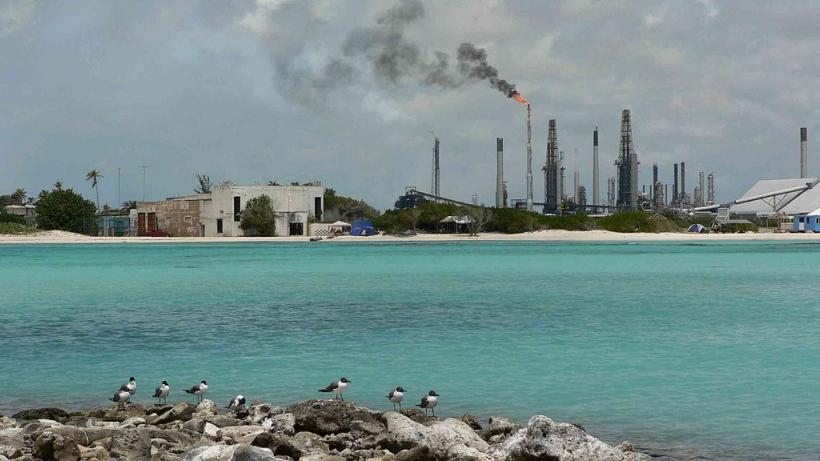
Why COVID-19 offers the perfect opportunity to remove fuel subsidies
April 2020 recorded the lowest oil price (USD 21/barrel of oil) in 18 years. This was driven by a lack of demand due to low economic activity worldwide. This temporary season of low oil prices presents an opportune moment for countries to remove inefficient fuel subsidies and reduce the knock-on effect to citizens. This reform also provides developing country governments with much needed resources for immediate response to the COVID-19 crisis and long-term investments in productive sectors, such as education and health care.
Inefficiencies of fuel subsidies
Consumers enjoy low fuel prices and history has consistently shown us that increases in such prices can drive protests and revolution. However, fuel subsidies, which create artificially low prices, are extremely costly and crowd out other public spending. The IMF estimates that fuel subsidies have a global average cost of approximately 6.5% of GDP. They are also ineffective in targeting the poorest, since benefits are distorted. Whereby high-income households gain more compared to poorer households who own and use fewer products that require petroleum and diesel.
From a health and environmental perspective, subsidised fuel incentivises excessive consumption, contributing to global warming, local pollution, and increased congestion. They are often introduced as political tools that improve the government-citizen relationship, but are difficult to sustain and become almost impossible to remove, due to low prices becoming part of a shared social demand and norm. These inefficiencies are the reason some governments and organisations are considering this reform as a major priority.
Effective fuel subsidy reform
Although public discontent cannot be avoided, it can be mitigated if subsidies are removed at a time when oil prices are low, which lowers the knock-on impacts to citizens. In order to do so effectively, reform design must be done based on evidence of what works well. I present five recommendations, drawn from this policy brief, which developing country governments can use to design reform during this current window of opportunity, which low oil prices present.
- A targeted reform plan. It is necessary to have a strategic plan, which addresses the different groups in the population and obtains buy-in from the poorest as well as the middle-class and wealthiest. Subsidy reform creates the opportunity to redistribute government spending to maximise the benefits to those most in need. Therefore, an important part of the plan is to target measures to protect the poorest and most vulnerable groups. Examples of targeted redistribution include cash transfers, and health and education programmes for the most vulnerable. These should be context specific and comprise of an inclusive roadmap.
- Appropriately phased price increases. The current window of low oil prices offers a low risk of impact on incomes, which minimises the need for consumer adjustment. However, in some cases a phased approach or partial reform may be relevant, to mitigate extreme shocks and shield vulnerable sectors. Designing the pricing mechanism should take advantage of data and international peer reviews where possible, to boost legitimacy and add credibility.
- Far-reaching communication strategy. Reform should be communicated to the public with a clear message and plan. It is necessary to inform the public about the size of the subsidy and rationale behind removing it. Communicating key steps, including how the savings will be used and the benefits reform will reap for different groups and the country overall, is key to getting the general public on board. It is also important for reform to always be led domestically, with transparency and channels for scrutiny, which is maximised through effective consultation.
- Investing in productive sectors. Fuel subsidy reform provides immediate spending to respond to the COVID-19 crisis. Another important use of the funds is through investing in productive sectors, such as green energy, infrastructure, education, health, and utility services. This creates jobs and economic growth, as well as an enabling environment that attracts foreign direct investment, which are important for long-run recovery and resilience.
- Implementing transparency mechanisms. Particularly in oil-rich countries, where fuel subsidies can be a mechanism to reduce corruption, it is important to implement transparency mechanisms when using additional revenues. This can help obtain buy-in and political acceptance of the reform, while ensuring corruption is minimised and spending is efficient.
A timely opportunity
COVID-19 has placed immense pressures on developing countries to raise additional resources and improve distribution of current resources. Fuel subsidy removal is a major reform being considered by many governments and organisations, particularly where the subsidy comprises of inefficiencies, including distorted benefits, increased pollution, and costly crowding out of public spending. The current decline in oil prices presents a timely opportunity to design and implement this reform, reducing the knock-on impact to citizens, and providing the much-needed resources for immediate COVID-19 related spending and long-term investments. To do so effectively during this opportune moment, developing country governments should adopt the above principles, which are detailed more extensively in IGC’s policy brief: “Low oil prices during COVID-19 and the case for removing fuel subsidies”.
Disclaimer: The views expressed in this post are those of the authors based on their experience and on prior research and do not necessarily reflect the views of the IGC.

